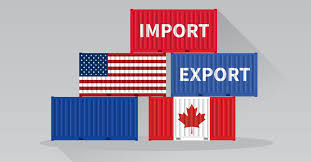Global financial markets are deeply intertwined with political decisions, and few policies have a greater impact than trade tariffs and economic protectionism. As we move into 2025, concerns over a renewed global tariff war are rising, with major economies considering increased trade barriers to protect domestic industries.
From the U.S. and China trade tensions a Europe’s economic policies, investors must be prepared for how political economies will shape the stock market, currency values, and global trade in the coming year. Understanding these dynamics can help navigate volatility, identify risks, and uncover potential investment opportunities.
The 2025 Tariff War: What’s Happening?
As global economic growth slows, major economies are shifting towards more protectionist policies to safeguard their industries. Some of the key developments include:
- U.S. Tariffs on Chinese Goods: The Biden administration (or a possible new leadership) is expected to review or reinstate stricter tariffs on Chinese imports, particularly in sectors like technology, electric vehicles (EVs), and semiconductors.
- European Union’s Trade Barriers: The EU is considering higher tariffs on American and Chinese tech products, aiming to boost its domestic production and reduce reliance on foreign technology.
- China’s Retaliatory Measures: In response, China may impose higher tariffs on U.S. agricultural goods, semiconductors, and automobiles, further straining global supply chains.
These moves echo the trade wars of 2018-2019, which triggered market volatility, supply chain disruptions, and shifts in corporate investment strategies.
How Tariffs and Political Tensions Impact Financial Markets
When major economies engage in trade wars, the ripple effects can be felt across equities, bonds, commodities, and currencies.
1. Stock Market Volatility Increases
Trade wars introduce uncertainty, and markets dislike uncertainty.
- Durante il U.S.-China trade war of 2018-2019, the S&P 500 experienced multiple corrections of 5-10% as new tariffs were announced.
- In August 2019, after China devalued its currency in retaliation, the Dow Jones dropped over 700 points in a single day.
- Emerging markets suffered heavily, with the MSCI Emerging Markets Index falling 15% in 2018 due to trade uncertainty.
If tariff conflicts escalate in 2025, expect increased volatility, particularly in sectors reliant on international trade, such as automotive, tech, and industrials.
2. Supply Chain Disruptions Affect Corporate Earnings
Higher tariffs increase costs for companies, forcing them to either:
- Absorb the costs, reducing profit margins.
- Pass the costs to consumers, leading to higher inflation and reduced consumer spending.
For example, during previous tariff hikes:
- Apple (AAPL) saw increased costs on Chinese-manufactured components.
- Tesla (TSLA) and Ford (F) faced higher steel and aluminum prices due to import duties.
- Retailers like Walmart and Target struggled with increased costs on imported goods.
A similar scenario in 2025 could lead to lower corporate earnings, impacting stock prices.
3. Currency Markets React Strongly
Trade wars often lead to currency devaluations as countries try to offset tariff costs by making exports cheaper.
- In 2019, China devalued the yuan (CNY) to counter U.S. tariffs, causing panic in global markets.
- Il U.S. dollar (USD) strengthened during trade tensions, making American exports less competitive.
- Emerging market currencies, like the Mexican peso (MXN) and South Korean won (KRW), saw significant declines due to their trade exposure.
Investors should watch currency movements closely, as they can impact corporate revenues and global capital flows.
Investment Strategies for a Politically Volatile 2025
With trade tensions rising, investors should consider strategies to hedge risks and capitalize on new opportunities.
1. Shift Towards Domestic-Focused Stocks
Companies with limited international exposure tend to perform better during trade conflicts.
- Consumer staples (Procter & Gamble, Coca-Cola) e healthcare stocks (Pfizer, Johnson & Johnson) are less affected by tariffs.
- Regional banks and domestic retailers could outperform as local economies benefit from protectionist policies.
2. Consider Defensive Sectors
During trade wars, investors often move towards defensive sectors that provide stable returns.
- Utilities (Duke Energy, NextEra Energy)
- Healthcare (UnitedHealth Group, Merck & Co.)
- Dividend-paying blue chips that can weather economic slowdowns.
3. Hedge with Commodities and Gold
Trade wars weaken currencies, making gold and commodities attractive hedges.
- Durante il 2018-2019 trade war, gold prices rose 25%, reaching new highs.
- Industrial metals like copper and aluminum can benefit if tariffs lead to supply shortages.
4. Watch Emerging Markets and Supply Chain Shifts
As companies relocate manufacturing to avoid tariffs, some emerging markets may benefit.
- Countries like Vietnam, India, and Mexico saw an increase in foreign investment during the last U.S.-China trade war.
- Investors could look at ETFs tracking these economies, come ad esempio iShares MSCI Emerging Markets ETF (EEM).
What to Expect: Navigating the 2025 Trade War Landscape
While tariffs and trade disputes create short-term market turbulence, they also present opportunities for informed investors. By understanding how different asset classes react to political and economic shifts, investors can position their portfolios for resilience and growth.
History has shown that markets eventually adjust, but those who anticipate shifts early can make better-informed investment decisions and hedge against risks. In a politically charged 2025, staying ahead of macroeconomic trends will be key to navigating financial markets successfully.

